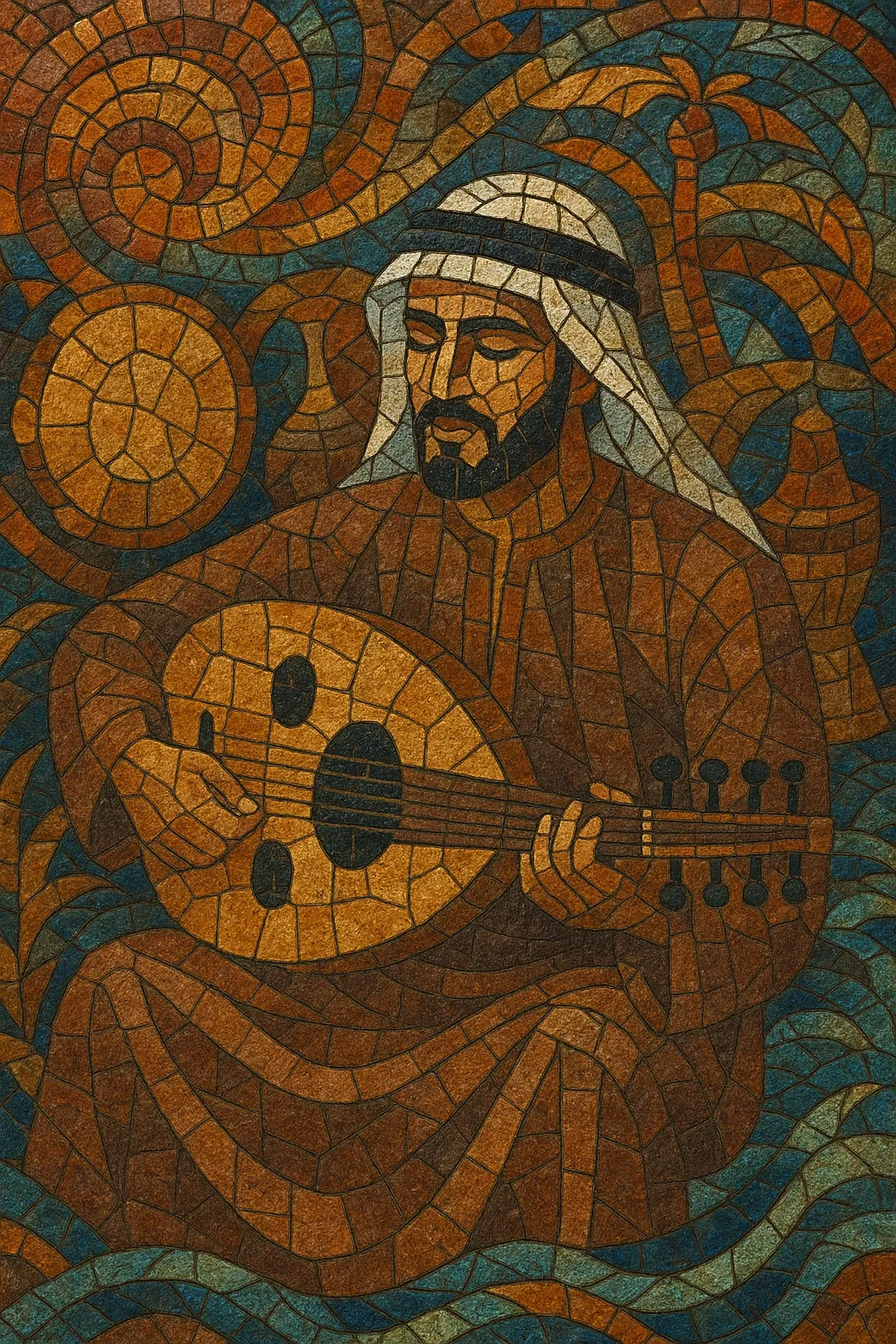Khaleeji (Khaliji) is the contemporary popular music of the Arabian Gulf, spanning Saudi Arabia, Kuwait, Bahrain, Qatar, the United Arab Emirates, and Oman. It blends deep-rooted Gulf rhythmic traditions and poetic forms with modern pop arrangement, creating a distinctly percussive, melodic, and danceable sound.
Core characteristics include driving hand-drum grooves (mirwās, tabl, riqq), ornate vocal lines grounded in the Arabic maqam system (often Bayātī, Rāst, Ḥijāz, and Nahāwand), and Gulf-dialect (Nabaṭī) lyrics that balance romantic themes with imagery of desert, sea, and kinship. Since the 1980s, synthesizers, drum machines, and lush string pads have joined oud, violin, and qanun, giving Khaleeji its sleek pop sheen while preserving its rhythmic identity (samri and khaleegy dance rhythms).
The result is a style that feels both traditional and modern: celebratory and suited to social dancing, yet melodically expressive and lyrically intimate.
Khaleeji draws on a tapestry of pre-20th-century Gulf musical practices shaped by trade across the Indian Ocean. Maritime work songs and pearl-diving repertoires (fijiri) informed its call-and-response spirit and communal percussion. Urban art-music like Kuwaiti and Bahraini sawt brought maqam-based melody, mirwās-driven grooves, and refined poetry. Regional dance and sung-poetry traditions such as samri (central Arabia) and liwa (of East African provenance in the Gulf) added distinctive rhythmic feels and performance contexts.
From the 1970s, studio recording, radio, and television catalyzed a modern “Khaleeji pop” sound. Iconic singers from Saudi Arabia and Kuwait popularized orchestrated arrangements that combined oud and violins with electric bass, keyboards, and early drum machines, while keeping the rhythmic DNA of samri and khaleegy dance. By the 1980s–1990s, glossy productions, large string sections, and synth textures became hallmarks, helping the genre spread across the Arab world.
With satellite TV, digital distribution, and pan-Arab festivals, Khaleeji solidified its regional mainstream status. Producers formalized signature beat patterns (“khaleeji” loops) and polished vocal production, while lyrics continued to foreground Nabaṭī poetic imagery. Cross-border collaborations with Levantine and Egyptian writers and arrangers further broadened its appeal.
Contemporary Khaleeji retains its heritage rhythms and maqam-centered vocals, but embraces modern pop, R&B, and electronic production. It thrives in weddings and social celebrations, while also occupying streaming playlists with both uptempo dance tracks and intimate ballads. The genre remains a cultural marker of Gulf identity and a driver of the region’s music industry.


